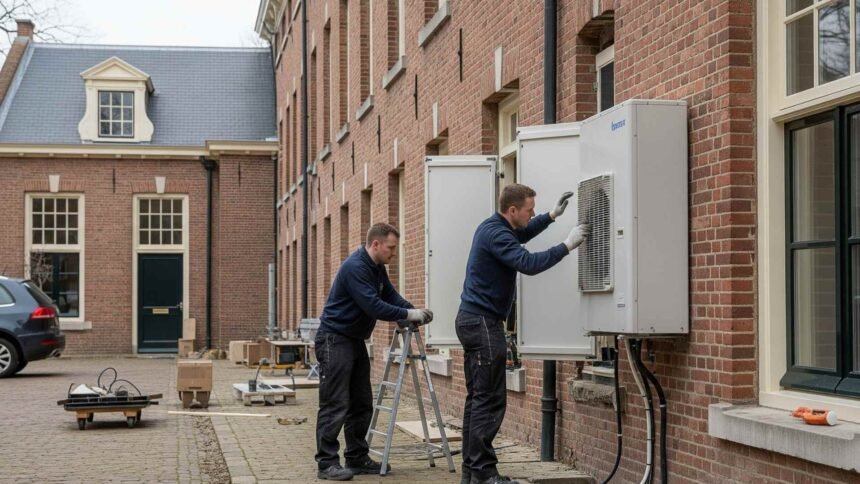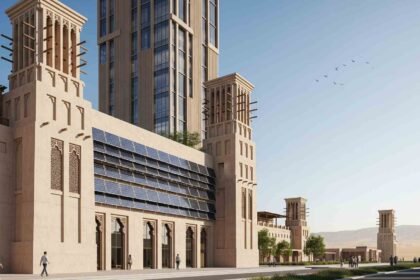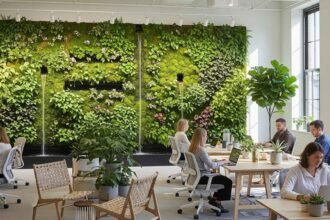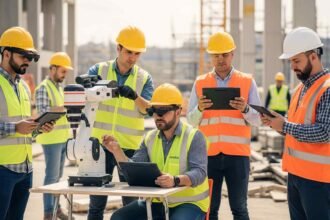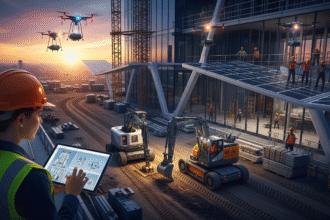In the Gulf region, where scorching summers and cooler winters define the climate, maintaining comfortable indoor environments in old buildings is a significant challenge. Traditional Gulf architecture, with its coral stone walls, mud constructions, and palm-frond roofs, was designed to harness natural ventilation through features like courtyards and wind towers. However, as these buildings age and modern comfort standards rise, there is a pressing need for sustainable climate control solutions. High-performance heat pumps are emerging as a promising technology, offering efficient heating and cooling while reducing energy consumption and preserving the region’s cultural heritage.
The Case for Heat Pumps in Old Buildings
High-performance heat pumps transfer heat rather than generate it, making them highly efficient for both heating and cooling. In the Gulf, where cooling accounts for 60–65% of residential electricity use, this efficiency is critical. Air-source heat pumps extract heat from the outside air, while ground-source heat pumps use the stable temperature of the ground. Both systems can provide cooling during the Gulf’s intense summers and heating during cooler winter months, making them versatile for the region’s climate.
Old buildings in the Gulf, such as historic homes in Dubai’s Al Fahidi district or traditional structures in Bahrain, often lack modern insulation, leading to significant energy losses. Heat pumps can address this by delivering efficient climate control, reducing reliance on energy-intensive air conditioning systems. Moreover, they align with regional sustainability goals, such as the UAE’s Dubai Integrated Energy Strategy 2030, which aims to cut energy use by 30% by 2030.
Overcoming Installation Challenges
Retrofitting heat pumps into old buildings presents several challenges, but modern solutions make it feasible:
Insulation and Energy Loss
Many Gulf buildings were designed for natural ventilation, not insulation, resulting in high heat loss. Retrofitting insulation is essential to maximize heat pump efficiency. For historic buildings, this must be done carefully to preserve architectural integrity. Modern materials, such as external or cavity wall insulation, can be applied discreetly. For example, double-glazed windows that mimic traditional designs can reduce heat loss without altering a building’s aesthetic.
Space and Aesthetic Constraints
Old buildings often have limited space for mechanical equipment, and visible installations may clash with historic designs. Compact air-source heat pumps can be placed on rooftops or in concealed areas, while ground-source systems, though more efficient, require space for underground loops, which may not always be available in urban settings. In historic districts, local regulations may restrict external modifications, necessitating creative solutions like custom enclosures to hide units.
System Compatibility
Traditional heating systems in older buildings often use high-temperature radiators, which are less compatible with the lower flow temperatures of standard heat pumps. High-temperature heat pumps, designed to work with existing radiators, offer a solution. Alternatively, installing larger radiators or underfloor heating can enhance efficiency, though this may require more extensive retrofitting.
Benefits for the Gulf Region
The adoption of high-performance heat pumps in old Gulf buildings offers multiple advantages:
- Energy Efficiency: Heat pumps can achieve a Coefficient of Performance (COP) of 3–5, meaning they produce 3–5 units of heat or cooling for every unit of electricity consumed. This is a significant improvement over traditional air conditioners, which dominate energy use in the Gulf.
- Environmental Impact: By reducing electricity consumption and reliance on fossil fuels, heat pumps lower carbon emissions, supporting regional goals like the UAE’s commitment to LEED-certified projects and Bahrain’s energy conservation codes.
- Cost Savings: While initial installation costs can be high, especially with retrofitting, the long-term savings from reduced energy bills make heat pumps economically viable. For instance, a study in Bahrain showed that energy-efficient measures could yield up to 24.4% energy savings with a payback period of 5–10 years.
- Heritage Preservation: Efficient climate control reduces moisture-related damage, such as mold or material degradation, helping preserve historic buildings for future generations.
Global Lessons, Gulf Applications
While specific examples of heat pump retrofits in Gulf historic buildings are limited, global case studies provide valuable insights. In the UK, Historic England’s 2021 study of air-source heat pumps in ten historic properties, including 18th- and 19th-century homes and churches, showed that well-planned installations achieved high occupant satisfaction and energy efficiency. These systems were tailored to each building’s needs, with careful attention to insulation and radiator sizing.
In the Gulf, the focus on energy efficiency is growing. Dubai’s Etihad ESCO has targeted retrofitting over 30,000 buildings, achieving significant energy savings through measures like efficient lighting and cooling systems. Although heat pumps are not explicitly mentioned, their potential to replace traditional air conditioners aligns with these efforts. For example, Abu Dhabi’s ESTIDAMA 1 code requires a COP of 3.22 for cooling systems, a standard that high-performance heat pumps can meet or exceed.
Regional Policies and Opportunities
The Gulf Cooperation Council (GCC) countries are increasingly prioritizing energy efficiency. The UAE’s building codes, such as Abu Dhabi’s ESTIDAMA and Dubai’s green building regulations, emphasize reducing cooling loads, which heat pumps can achieve. Bahrain’s Energy Conservation Code and Saudi Arabia’s building code also set performance standards for cooling systems, creating opportunities for heat pump adoption. Financial incentives, such as green loans or retrofit subsidies, could further encourage their use in old buildings.
Traditional Gulf architecture, with features like thick walls and courtyards, already offers some energy-efficient qualities. Combining these with modern heat pumps could enhance performance while preserving cultural heritage. For instance, integrating heat pumps with solar panels, as suggested in regional studies, could further reduce electricity costs and environmental impact.
Case Study Potential
For instance, a hypothetical retrofit of a historic home in Dubai’s Al Fahidi district could involve installing an air-source heat pump on the rooftop, paired with discreet insulation upgrades. Such a project would need to comply with local heritage regulations, ensuring minimal visual impact. The success of similar projects in the UK suggests that with proper planning, heat pumps could transform old Gulf buildings into energy-efficient, comfortable spaces.
High-performance heat pumps offer a sustainable solution for modernizing climate control in old Gulf buildings. Despite challenges like insulation and space constraints, careful planning and innovative designs can overcome these hurdles. The benefits—energy savings, reduced carbon emissions, and preservation of cultural heritage—align with the Gulf’s sustainability goals and growing focus on retrofitting. As the region continues to balance tradition with progress, heat pumps could play a pivotal role in ensuring old buildings remain functional and environmentally friendly for generations to come.


